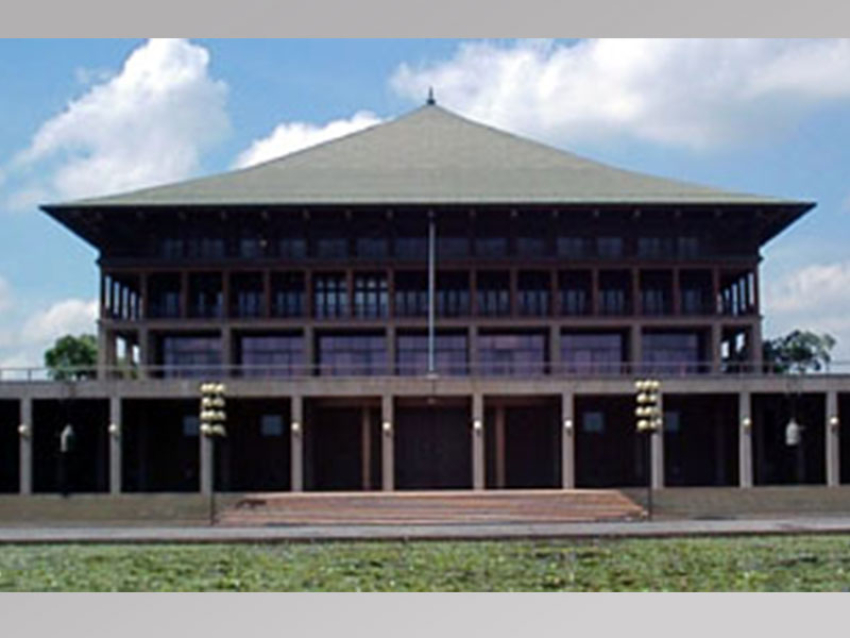It now seems clear that the attacks on Easter Sunday were carried out by local radicals under the aegis of foreign fundamentalists. The problem is that there is little support for this group from the wider Muslim community. While those involved must be swiftly identified with and dealt with, the bigger question is how to check the spread of radicalisation. A paper by Joel Day and Scott Kleinmann offer an approach that is summarised below. Violent extremism is a cult, not a religion.
According to the authors, treating violent extremism as a problem of religion or belief is a mistake. The process of radical, violent mobilisation shows closer links to that of a cult. “The central problem with focusing on beliefs is the issue of variation. Simply put, if “radical” beliefs produce terrorists, then why doesn’t every Salafist or political-Islamist mosque produce terrorists? Even more complicated, why have most of those providing material support to Islamic terrorist groups shown little understanding of theology, but instead seem to be attracted to the thrill of Jihadi adventurism.”
Accordingly, counterstrategies based on empowering moderate, liberal voices to preach inclusion and tolerance to seemingly more “extreme” mosques may not be effective, indeed even counterproductive.When confronted with countering evidence, individuals may become defensive and cling on to initial beliefs more strongly, driving fences-sitters towards radicalisation.
“It is, therefore, problematic to assume that “countering narratives,” showing extremists the error of their ways, or debating theology would do anything other than produce hostility and even spur heightened aggression.”
On June 12, 2016, Omar Mateen, a 29-year-old American security guard, killed 49 people and wounded 53 others in a mass shooting inside Pulse, a gay nightclub. The killer was believed to have been gay, consumed alcohol, not known in the local mosques but showed signs of identity confusion, anger, isolation, and other attributes shared with violent individuals of all sorts.
Countering a cult
To deal with a cult the focus should be on weakening the organisational ties within the movement, not on the debate. In the debate, people tend to rely more on intuition than reason. If people are not working from an ideological standpoint there is little possibility of making headway through discussions it may make more sense to counter the networks and personal ties between individuals and terrorist groups instead.
This model maintains that since ideology fails to predict or abet terrorist violence, other social factors such as alienation, mental health, or bonds with other bad actors explain violence. It is not that ideology doesn’t matter at all, but rather that ideological pulls exist within a social context. It is the social context that counter-strategies should be focusing on.
How do cults work?
Cults create affective bonds around friendship, not belief.
Most recruits to cults and new religious movements come from those who know one or more members of the group. The personal connection between recruiter and recruited is far more persuasive than the content of the belief system as the testimony of former cult members shows:
“The way the Jesus Army worshipped was a bit odd at first … but I soon got used to it. What really attracted me was the sincerity of the people and the obvious love and bonding that they had with each other”.
Likewise, a participant in another culture pointed out:
“After his first visit to the FWBO centre, he thought members of the centre were crazy and decided not to go back. However, he thought about all the people he knew there, and he recalled what a great time he had with them. Subsequently, he turned up for the rest of the course.”
Similarly, terror networks operate around bonds of kinship and friendship. Scott Atran found that 95% of foreign fighters who joined ISIS were recruited by friends or family. Similarly, in his study of Al Qaeda networks, Marc Sageman found that friends and family ties were involved in the recruitment of 82% of the Jihadists in his study.
A vast literature finds that terrorists are not goal-seeking or strategic, but instead are motivated by a desire for friends and comradery. It is worth recalling that 6 of the 19 September 11 hijackers were brothers.
Social connections are deep and meaningful.
A cult is not simply a quixotic fringe group with unorthodox practices: they are a community of practice. For alienated, isolated individuals, cults create effective bonds of love and attention received from nowhere else.
The culture of Jihad is more than ideology: a burgeoning literature has found that terrorist groups have cultures of practice that go far beyond doing terror. Terrorists read poetry, weep and hug, sing, eat, and have a culture that can be observed outside of the material threat they pose.
This phenomenon is the “soft power” of Jihad, which pulls recruits in not with force, but with cultural appeal and interrelational ties. Cults thrive on intensive interaction between recruits and elites and forge social encapsulation.
Cults rely on exclusive and isolating bonding practices that forge the conditions necessary for violence. Social encapsulation inoculates the recruits from outside influence, neutralises the stigma frequently associated with participation in such groups, and masks their deviant behaviour.
Conversely, the more civil connections a group has with others, the more engaged they become in the democratic process. Cohesion and overlapping, bridging ties between communities can prevent splintering, ideological isolation, and foster mutual respect. Cults offer direct compensation and provision of goods in exchange of allegiance.
People may join associations to procure goods they could not otherwise get on their own. For cults and extremist groups alike, rewards can include power, material provisions like food and shelter, as well as ego and cosmically driven outcomes. The former Saddam Hussein Baathists joined ISIS, not for ideological reasons, but to procure power and goods they were otherwise denied following the US de-Baathification policy.
Many foreign fighters in ISIS don’t have experience in Arabic, which indicates that the ideology cannot be very well developed. Instead, they are promised wives, adventure, and alternatives to the lives they live in the West.
Women are promised comfort, the ability to raise a family in a pure Muslim environment—the utopia is even complete with houses, clothes, and even blenders. None of these core elements of cult-recruitment and radicalisation operates around ideology per se.
Terrorist groups, like cults, are a friend and kin networks that isolate and encapsulate new members, offering various forms of compensation and affection those members could not get elsewhere. Instead of ideology, policymakers should focus on the bonds of affection between friends and kind build campaigns that target the correct avenues of extremist radicalisation.
The first step is to be able to identify early signs of radicalisation and those best able to do so are an individual’s friends or family. However if reporting can lead to harsh government reprisals, they will be reluctant to do so.
“Community-based mosques, youth clubs, and social services should be given more resources to gain the trust of entire friendship networks. Local basketball tournaments, food-drives, open shari’a classes, and drop-in counselling sessions are civic trust-building exercises. Within these civic institutions, friends can feel safe to report warning signs because they trust the community to carefully reprimand and rehabilitate the offender and act as a social bridge to law enforcement. Mosques should be celebrated for building deep community ties because such social fabric is far more likely to prevent radicalization than debating the finer points of shari’a law in chat rooms.”
For example, Denmark has recently employed an effective bond-based counter-extremism programme that focuses on linking up would-be Jihadis with mentors, learning skills, and providing avenues of hope. This actively combats the cult-like mechanisms of friendship, love, intimacy, and compensation.
Danish mothers have also established a peer network called “Sahan,” where mothers worried about a child can seek advice and counsel from others on how to intervene.
ISIS sympathizers
In Canada and Germany, groups have sprung up called “Hayat”—the Arabic word for love—to highlight the loving network that ISIS sympathizers actually have at home.
Second governments should not be about policing -reporting “strange ideas or behaviours.” The government needs to support vulnerable communities - job fairs, tutoring, recreation, and civic engagement to ensure people are productively engaged.
“Since religious ideology doesn’t predict violence, but rather the social conditions of groups, governments should think of CVE as simply providing good government. In essence, we guard against violence by making our societies less vulnerable to cult-like groups seeking to isolate, encapsulate, and predate on weak individuals”.
Mosques should be celebrated for building deep community ties because such social fabric is far more likely to prevent radicalisation than debating the finer points of shari’a law in chat rooms.
We should target and counter all types of “extremist violence.” The cult analogy points to the social factors that give ideology meaning, but all types of violence have social conditions that constitute actors in particular ways. Countering extremism should be conceptualised as engaging a social phenomenon, not just a set of beliefs and ideas.
As Robert Putnam has argued, the fabric of a healthy democracy is the relational bonds between citizens. Similarly, the fabric of a strategy to counter extremism is to build a social network of alternatives to the appeal of violence.
The attacks were carried out by a few individuals, with little broader support. The government, civil society and the Muslim community need to work together to defeat this.
Email Facebook Twitter google_plus Pinterest0 WhatsApp Viber Facebook Messenger



















